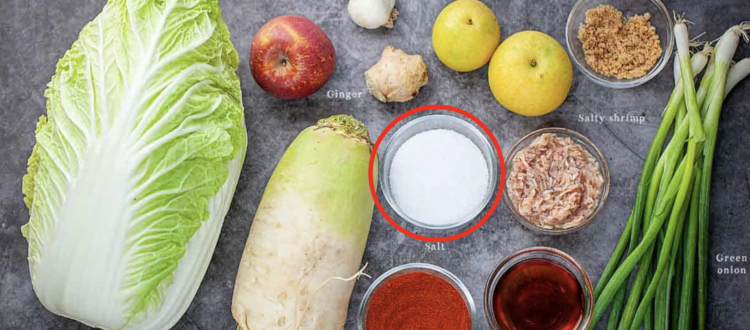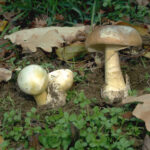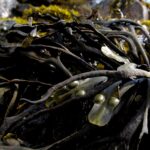
Fermenting and Preserving food in glass workshop by A/Prof Julian Cox Scientific Director of the Food Safety Information Council please click on this link to download the recording of the workshop. Download the presentation slides NSW 2022 FSIC 20220809 Handout
Please click on this link below to access the good bugs/bad bugs video.
Kreating Kimchi
iIf you have any feedback on this classroom exercise please contact us at info@foodsafety.asn.au
Introduction
Fermentation is an ancient approach to extending shelf life of a range of perishable foods, even today providing access to foodstuffs that might otherwise be unavailable throughout the year. Further, fermentation adds richly to the diversity of foods which consumers can enjoy, providing a breadth and depth of sensory experience not found in the fresh ingredients that comprise the basis of the ferment.
This exercise provides an opportunity to establish a natural fermentation, essentially as it has been conducted throughout history, while allowing you, the students, to add an element of creativity in the formulation of the kimchi. Kimchi, the basis of this practical exercise can be formulated to suit flexible, vegetarian and vegan diets.
This laboratory exercise is suitable for senior high school students, and could be used as part of teaching in Science and/or Home Economics curricula.
Risks and hazards in this practical:
In this practical you may encounter hazardous substances and perform hazardous tasks.
- Use of food materials. Students with allergies have a responsibility to be aware of the ingredients used in this practical and take any necessary precautions.
- Use of sharp equipment, mainly kitchen knives. Students should take care to hold samples securely on a stable cutting surface, with fingers well out of the path of the blade. Be mindful of others working nearby. Seek advice if unsure of safe cutting practice.
- Use of electrical equipment including balances, blenders and the pH meter. You will be handling liquids near this equipment. Beware of the electrocution risk. Minimise the risk of spillage by keeping all work areas tidy and being mindful of others working nearby.
Learning outcomes
- Describe an approach to reformulate a fermented food product to vary its sensory quality.
- Identify factors that contribute to product stability and safety.
Summary of practical activities
Week 1 – Preparation
Week 2 – Analysis and early sensory evaluation: Check pH, and sensory evaluation after up to 1-2 weeks of fermentation
Week 3 – Final analysis and sensory evaluation: Check pH, and sensory evaluation after 1 week of refrigeration
What is kimchi?
The Australia New Zealand Food Standards Code does not currently stipulate a definition for kimchi. However, an international organization, Codex Alimentarius (“Codex”), defined the product in 2001 to protect provenance, fair trade and consumers (Reference).
According to Codex, “Kimchi” is the product:
(a) prepared from varieties of Chinese cabbage, Brassica pekinensis Rupr.; such Chinese cabbages shall be free from significant defects, and trimmed to remove inedible parts, salted, washed with fresh water, and drained to remove excess water; they may or may not be cut into suitable sized pieces/parts;
(b) processed with seasoning mixture mainly consisting of red pepper (Capsicum annuum L.) powder, garlic, ginger, edible Allium varieties other than garlic, and radish. These ingredients may be chopped, sliced and broken into pieces; and
(c) fermented before or after being packaged into appropriate containers to ensure the proper ripening and preservation of the product by lactic acid production at low temperatures.”
In summary, the product definition includes primary ingredients, their quality and preparation, seasoning ingredients and their preparation, and fermentation before or after packaging. Fermentation is a key criterion, given competition in the global market from similar products, made rapidly using pickling processes, rather than natural fermentation.
Activity
Considering the quality of the final product:
- What do you think are the main variables among the ingredients that will impact quality?
- What do you think are the main steps in making the kimchi that will impact quality?
- What methods could be used to evaluate the quality?
Kimchi preparation
It is suggested that students work in pairs or groups of three.
Red Kimchi paste ingredients
| Ingredient | Mass/quantity |
| Gochugaru (Korean chilli pepper), mild or hot, to taste | 30g or ¼ Cup |
| Garlic cloves | 6-8 |
| Brown or white onion | 1 medium |
| Green apple, unpeeled and cored | 1 small |
| Nashi pear, unpeeled and cored | 1 medium |
| Fish sauce | 4 Tablespoons |
If this chilli flake product is difficult to obtain, then using 30g each of gochujang and other chilli flakes is a reasonable substitute.
In place of fish sauce, for a more authentic recipe, use small, fermented shrimp (sae-oo jeot). If making vegan kimchi, substitute 3 tablespoons of red or white miso paste.
Preparation of paste
NOTE: Each group will need about 1/3 of the amount of paste to prepare sufficient kimchi for two jars. It is suggested that groups work together to negotiate and prepare a base paste (red or white), and then amend as desired to prepare a variation. Discuss with one of the teacher.
Core the apple and Nashi and cut into quarters
Peel and roughly chop the onion
Peel the garlic cloves, if necessary
Add all prepared ingredients to a blender and process to a smooth paste.
Use immediately, or allow to ferment in an airtight container for up to 7 days. Refrigerate for up to 12 months.
White Kimchi paste ingredients
| Ingredient | Mass/quantity |
| Spring onions | 1 bunch |
| Chopped ginger | 30g or ¼ Cup |
| Garlic cloves | 6-8 |
| Green apple, unpeeled and cored | 1 small |
| Nashi pear, unpeeled and cored | 1 medium |
| Fish sauce | 4 Tablespoons |
The fish sauce is typically made from anchovies and source Korean fish sauce as a preference. In place of fish sauce, for a more authentic recipe, use small, fermented shrimp (sae-oo jeot). If making vegan kimchi, substitute 3 tablespoons of red or white miso paste.
Preparation of paste
NOTE: See the note under preparation of red kimchi paste.
Core the apple and Nashi and cut into quarters
Peel and chop the ginger, if necessary
Peel the garlic cloves, if necessary
Roughly chop the white portion of the spring onions (the green parts can be used elsewhere)
Add all prepared ingredients to a blender and process to a smooth paste.
Use immediately, or allow to ferment in an airtight container for up to 7 days. Refrigerate for up to 12 months.
Kimchi ingredients
| Ingredient | Mass/quantity |
| Chinese cabbage (wombok) | 1 large (2.2-2.5kg) |
| Sea salt (or plain salt – non-iodised) | 50g or ¼ Cup |
| Korean radish or daikon | 1 large |
| Carrots | 2 large |
| Spring onions | 1 bunch |
| Garlic chives5 | 1 bunch |
| Red or white kimchi paste | 1 quantity (as recipes above) |
Note:
If Chinese cabbage unavailable, use white cabbage.
If Daikon unavailable, use turnip
If garlic chives unavailable, use the green tops of spring onions
NOTE 1: The cabbage can be prepared by technical staff, made available in zip-lock bags or containers, sufficient for one group (equivalent of 1/3 of a cabbage).
Note 2: This recipe is sufficient for six (6) jars of about 500 ml volume each. Each group will prepare a 1/3 recipe, sufficient for two jars. Each group should prepare ingredients for two jars, mix and split in two, and then mix each set of the vegetable mix with an appropriate quantity of each of the two different pastes. You can vary the recipe as you wish, but with an overall limit of the mass of ingredients to fill two jars.
| Equipment |
| Apple corer – 1/group |
| Cutting boards – 1 per group |
| Knives for chopping – 1 large, 1 medium per group |
| Blenders – 1 per group |
| Jars/containers for pastes |
| Large bowl or pot for preparation of cabbage |
| Colander |
| Bowls for preparation of kimchi – 1 or 2 per group |
| Jars/containers for kimchi – 2 per group |
| Trays – 1 per group |
| Paper towel |
| Beakers for pH measurement |
| Distilled water |
| pH meter |
Preparation of kimchi
- Chop the cabbage into quarters or eights, lengthwise, and then into bite-size chunks.
- In a large bowl, mix the cabbage with the salt, ensuring the salt is well distributed, and rub the salt into the cabbage.
- Leave the cabbage for at least 30 minutes, until fluid is observed to be seeping from the cabbage. Mix the cabbage through and repeat this step three more times (2 hours in total). The recipe can then be completed, or the cabbage can be left overnight. If the latter, the cabbage can be left covered at ambient temperature.
- After brining, rinse the cabbage briefly under cold running water and drain well, using a colander.
- Retain the brine (the liquid that has formed during the salting of the cabbage).
NOTE: Steps 1-5 have been performed by staff. Brined cabbage, equivalent to 1/3 of a cabbage, will be supplied, as noted above, prepared in a zip-lock bag or container.
- Combine the cabbage with the remaining ingredients. As noted above, you can vary the ingredients, as long at the total mass is suitable for filling two jars.
- Divide the vegetable mix into two lots.
- For each lot of vegetable mix, rub the paste well through all of the mixture. Ensure you wash your hands well, both before and after this step.
- Take a sterilised jar and fill with the kimchi mix. Use a spoon to press the mix down, to remove air pockets and to ensure that the solids are covered by paste and fluid that moves to the top.
- If necessary, add brine solution (from Step 5) to ensure the kimchi mixture is completely covered.
- Repeat steps 7 to 10 for the second lot of vegetables, with a second paste.
- Place a lid on the top of each jar, but do not tighten; leave the lid loose during the fermentation period.
- Place the jars onto a tray with a high edge, lined with paper towel to catch any overflow from the jars.
- Leave at room temperature for 7-30 days. For this practical exercise, the fermentation will be left for up to three weeks/21 days.
- After the fermentation has progressed to taste, tighten the lids and transfer the kimchi to the refrigerator. It should be suitable for consumption up to 12 months.
Observation
After 7 days (or before, if possible), observe the kimchi for signs of fermentation. These may include bubbles of gas, and an acidic aroma, that may or may not smell slightly like vinegar. Do not assume these signs are there; observe and record exactly what you see and smell.
pH analysis
At Weeks 0, 1 and 2, determine the acidity (pH) of the kimchi. This section is designed to be done with a pH meter. If use of that instrument is not possible, pH paper could be used to estimate the pH value. Of course, this step could be left out, but checking pH in some way is critical to confirming that fermentation is proceeding/has proceeded.
- Remove a small amount (10-20g) of the kimchi to a small beaker.
- Mix with an equal mass of distilled water
- Remove the pH probe from its holder, rinse briefly with distilled water, and lightly touch paper towel to it to remove excess water
- Immerse the pH probe into the fluid and measure and record the pH.
- Remove the pH probe, rinse well with distilled water, and return the probe to the storage buffer.
Sensory analysis
At Weeks 0, 1 and 2, perform a sensory evaluation of the kimchi.
- Assess the aroma of each sample of kimchi on a hedonic scale of 1 to 7 (see diagram below). It is typically best to score quickly on your immediate reaction rather than overthink.
- Assess the basic taste (saltiness, sourness) and the overall flavour of each sample of kimchi on a hedonic scale of 1 to 7, as for aroma.
- Cleanse your palate by eating a plain water cracker, or some boiled rice (if available) and drinking some water between each sample.
- Note that is no point just testing one sample – if you are doing this exercise, you should test the two samples at Weeks 0 and 1, and consider testing all samples across the class at Week 2.
| None | Much | ||||||||||||||||
| 1 | 2 | 3 | 4 | 5 | 6 | 7 | |||||||||||
| Descriptor | 1 | to | 7 |
| Aroma | Do not like very much | To | Like very much |
| Saltiness | Not at all salty | To | Extremely salty |
| Sourness | Not at all sour | To | Extremely sour |
| Flavour | Do not like very much | To | Like very much |
| Overall acceptability | Not at all acceptable | to | Extremely acceptable |
Questions/discussion points
NOTE: These questions are suggestions only. You may or may not feel these are appropriate to your students and their level of study (some might require too much research or understanding of the science)..
How might you modify the recipe to suit specific tastes or demands? If you modify the recipe by adding, removing or substituting ingredients, or their proportions, how are they likely to impact the fermentation (if at all)?
How does the production of kimchi compare to production of similar fermented products, such as sauerkraut?
How do you think a kimchi-like product, made through pickling, would compare to the fermented product?
How might you modify the recipe and/or production of the kimchi to have greater confidence in its stability, quality and safety? What impacts might such changes have on sensory quality and/or consumer acceptability?
Reference
Davis, H. (2017) Ferment. A guide to the ancient art of culturing foods. Murdoch Books, Australia. ISBN: 9781743368671
For more information contact the Food Safety Information Council www.foodsafety.asn.au info@foodsafety.asn.au



